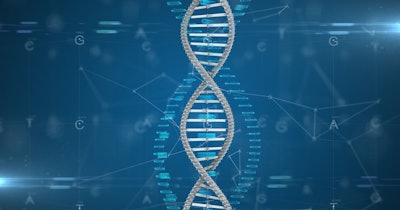
Modulating a DNA repair pathway may improve the safety and accuracy of the use of CRISPR technology, according to a team of researchers.
The process of gene editing, in which genomes are sliced at specific points and rejoined, carries the risk of damaging the DNA through unintended deletions; such damage may be extensive. The new strategy, developed by a team led by scientists at King Abdullah University of Science and Technology (KAUST) in Thuwal, Saudi Arabia, sought to mitigate this risk.
As the team explained in an article published in BMC Biology, they investigated the microhomology-mediated end joining (MMEJ) DNA repair pathway, one of the cellular mechanisms by which double-strand breaks introduced by CRISPR-Cas9 may be repaired. However, while it repairs breaks, MMEJ also plays a significant part in generating large deletions. In analyzing the roles of four key MMEJ genes in this process, the researchers determined that two of the four -- replication protein A (RPA) and DNA polymerase theta (POLQ) -- played key and opposing roles.
The KAUST researchers found that reducing POLQ levels significantly reduced large deletions while reducing RPA increased large-deletion frequency. Thus, they determined that inhibiting POLQ pharmacologically or increasing the expression of RPA through genetic techniques reduced the occurrence of large deletions without compromising the efficiency of the gene editing.
This approach had another benefit: "Interestingly, small-molecule inhibition of POLQ and delivery of recombinant RPA proteins also dramatically promote homology-directed repair (HDR) at multiple disease-relevant gene loci in human pluripotent stem cells and hematopoietic progenitor cells," the authors wrote.
HDR is a mechanism that enables accuracy in genome editing without the addition of unintended mutations. Through this approach, the research team was able to both prevent large deletions and improve the precision and accuracy of the editing while preserving the integrity of the cells being edited.



















